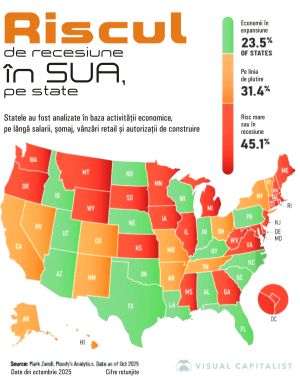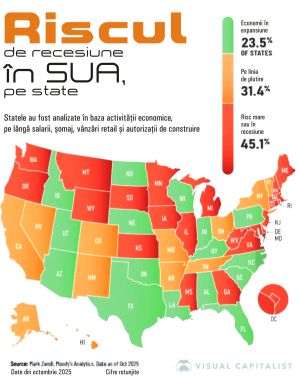Reporter: How large is the wealth of the Romanian Academy - land, buildings, money, books, artworks, furniture? Have you updated the book value of the assets?
Academician Păun Ion Otiman: The evaluation, from a patrimonial point of view, of the wealth of the Romanian Academy is a process which is irrelevant from an accounting standpoint, because the difference between "the market value" and the "book value" of the patrimony of an entity like the Romanian Academy, is great. The most important components of the treasure of the Romanian Academy are the scientific and the cultural one, not the material one, like so many laymen or malevolents imagine.
It is enough to mention just three patrimonial elements of the Romanian Academy:
- the historical documents, the manuscripts, incunabula, rare books (several millions, of which 497,000 recovered by the Library of the Romanian Academy over the last 2-3 years, namely the documents transferred to the National Archives through the decision of the Executive Political Committee of the Central Committee of the Romanian Communist Party PCR 1070/1978);
- the coin collection of the Romanian Academy - the Orghidan collection with over 3,000,000 coins - one of the biggest in Europe
- the art collections - paintings, graphics, sculptures, icons, Romanian, European and Oriental decorative artwork, furniture, etc. from the collections of Prof. George Oprescu, Academician Aurel Avramescu, Academician George Călinescu, Engineer Dumitru Minovici, Maria Bâscă, properties of the Romanian Academy, in total 616 pieces placed in the Treasure and Fund category.
The Romanian Academy owns 9,598 hectares of agricultural land (and it still has about 1,200 hectares to recoup), 16,265 hectares of forest (and it still has about 6,000 hectares to recoup), 24 buildings in Bucharest and various other localities in the country, of which 12 memorial houses and museums.
Reporter: When was the most recent evaluation of the wealth of the Romanian Academy done?
Academician Păun Ion Otiman: The evaluation and the registration of the wealth of the Romanian Academy are constantly occurring legal and accounting operations, but both of them are extremely costly. Over the last year (2012) we have conducted 46 evaluations, 16 real estate registrations (14 buildings, 16,265 hectares of forest) and have submitted 107 notifications (or requests for revision) to the administrative authorities.
Reporter: Was the wealth of the Romanian Academy restructured (did you sell off any assets, did you renovate any buildings etc.)?
Academician Păun Ion Otiman: The Romanian Academy has not sold any asset, not one of square meter of land, it has assigned two items of its patrimony which it never owned and which, due to the legislative changes of the 1948-1989 period, can not be restituted in kind, because they are not registered as agricultural land, which was the form in which they were bequeathed to the Romanian Academy, as they are now fully built, and it has also assigned the right of ownership over the apartment of the Coandă House - a building which was stolen from the Romanian Academy by the Communist state, prior to 1989, as well as by the post (neo)communist state after 1989 (which is something I will discuss later).
The Romanian Academy has also renovated and rehabilitated several properties, most of them using its own revenues and European funds: the Berthelot Memorial House, the Moxa House, the Bellu House, the George Oprescu House, the Titulescu House, the Avramescu house, while others are in the process of restoration: the George Călinescu House, the Maican House etc.
Reporter: Who is in charge of the wealth of the Romanian Academy?
Academician Păun Ion Otiman: The Patrimony Department is in charge of its public patrimony, the Patrimony Foundation (for the agricultural land) and the Penteleu Forest Division (for the forestland).
Reporter: Does the Romanian Academy own stocks listed on the Bucharest Stock Exchange or on other stock exchanges?
Academician Păun Ion Otiman: No.
Reporter: Do you still have ongoing lawsuits for recouping some properties?
Academician Păun Ion Otiman: We have many ongoing lawsuits, for about 40 buildings and plots of land adjacent to Bucharest.
Reporter: Do you have any ongoing lawsuits with the National Association for the Restitution of Properties (ANRP)? What is the amount of the damages that you are supposed to receive from the ANRP?
Academician Păun Ion Otiman: We do not have any lawsuits with the ANRP. A few buildings in Bucharest are on the list of potential compensations we should receive from the ANRP.
Reporter: What is the status of the securities which the Academy had in its patrimony before 1948?
Academician Păun Ion Otiman: The securities and the deeds which the Romanian Academy owned between 1866 and 1948 are as follows: shares - 946 million lei (evaluation at the time), bonds 4% and 5% - over 1 million, life annuities 5% - 235.6 million, government bonds 3% - 223 thousands.
None of those securities has been recouped, as no applicable legislation exists.
Reporter: The sale of the Coandă House at a lower price than the appraisal value led to numerous controversies, it is even mentioned in the Report of the Romanian Court of Auditors for the year 2011. The press has accused you of being the main man behind this sale. What can you tell us about this transaction?
Academician Păun Ion Otiman: Concerning the "sale of the Coandă House", the question is inaccurate.
The Romanian Academy has assigned the rights over the apartment of the Coandă House, lost by the Romanian Academy through the "care" of the Romanian communist and post (neo)communist state. The press and even the Court of Accounts, were "fed" lots of inaccurate information, by informers (sometimes even from the inside) who did absolutely nothing for the Romanian Academy.
Concerning "the sale of the Coandă House", I think it is necessary to clarify some essential aspects concerning this building, given the data and the inaccurate information which has appeared in the press.
The building called "the Coandă House", located in Bucharest, 29, Lascăr Catargiu Avenue (formerly Ana Ipătescu Avenue, 29-29 bis), district 1, has belonged to General Constantin Coandă.
Through the deed of voluntary allotment, certified by the Notary Division of the Court of Ilfov, with the no. 2553 of January 22nd, 1936, and transcribed in the Registry of the same court with the no. 1320 of January 22nd, 1936, the right of ownership over the building was split equally between Mrs. Popovici Aida-Maria-Elena and Mrs. Jeanne Aida Herbert (both born Coandă).
The right of ownership of Jeanne aida Herbert over her half was assigned to the Romanian state, which received from the French state the damages legally determined through the French-Romanian agreement of 1959.
Through the donation contract authenticated by the State Notary of District 1 of Bucharest, notary Corici Melania, with the no. 6133/05.09.1969, Mrs. Popovici Aida-Maria-Elena, donated to the Romanian Academy (at the time called the Academy of the Socialist Republic of Romania) her share of 1/2 of the building located in Bucharest, 29-29 bis Ana Ipătescu Avenue, namely the apartment on the 1st floor, made up of 7 rooms, lobby, bathroom, WC; laundry room no. 1, basements no. 1 and 2, and an inhabitable room next to the cellar as well as a bathroom, located in the basement of the building; the compartment no. 1 of the attic, the kitchen and two service rooms in the attic, the joint estate of 1/2 of the total surface of the entire plot of land of 428.30 sqm, as well as the joint estate of the common areas of the entire building.
Based on art. 8 of the Decree no. 409/1955 concerning the regulation on the transfer of goods owned by the state, the share of 1/2 of the building which belonged to Mrs. Jeanne Aida Herbert which had become the property of the state was given to the Romanian Academy to manage, by the Ministry of Finance, through Order no. 494/20.10.1969.
In 1977, the Central Committee of the Romanian Communist Party decided to give the use of the entire building, free of charge and for an indefinite period of time, to the Ministry of Foreign Affairs, starting with April 1st, 1977, the date when the building was effectively taken over by the Ministry based on art. 4 letter a) of the Decree no. 466/1960 which regulated the transfer of assets to and from the Romanian Communist Party.
The Romanian Academy asked the Council of Ministers of the Socialist Republic of Romania to create the Scientific Museum of the Romanian Academy, which was intended to showcase the life and work of scientist Henri Coandă. As a result of the Romanian Academy, through the Government Decision no. 1518/30.10.1970, The Council of Ministers of the Socialist Republic of Romania, approved the creation of the museum, which, between 1970 and 1977 operated in the building of Bucharest, 29-29bis, Ana Ipătescu avenue, district 1, during which time the building was part of the patrimony of our institution.
After April 1st, 1977, the Romanian state - through the Communist Party, abusively took over the entire building from the Romanian Academy and shut the museum down. Following this abusive takeover of the building by the state, the Romanian Academy transferred the collections of the museum depicting the life and work of scientist Henri Coandă to the "Eng. D. Leonida" Technical Museum, through the loan agreement no. 3183/10.07.1979.
Following the events which occurred between December 16th and December 22nd, 1989, which caused the fall of the communist regime in Romania, Decree - Law no. 30/1990 was issued, which decided that the patrimony of the former Romanian Communist Party would become the property of the state. This also included the Coandă House.
Through the Government Decision no. 115/1990 concerning the application of the Law/Decree no. 30/1990, published in the Official Gazette no. 148/1992, the Coandă House (including the privately owned half of it, which belonged to the Romanian Academy) was given to the Mayoralty of Bucharest to manage - The Division which serviced the Diplomatic Body, according to Appendix 3A, position 23.
Considering that the building was abusively taken over by the Romanian government in 1977 (through the decision of the Romanian Communist Party), based on Decree no. 466/1960 which regulated the transfer of the ownership of assets to and from the Romanian Communist Party, and that the building was never returned, the Academy took the actions stipulated in the Law no. 10/2011, republished.
Through Government Decision no. 298/28.05.2008, the R.A.A.P.P.S. issued a decision concerning the notification submitted by the Romanian Academy, acknowledging its rights and it decided the restitution in kind of the quota of 1/2 (of the apartment donated by Mrs. Popovici Aida-Maria-Elena) of the building located in Bucharest, 29, Lascăr Catargiu Avenue (formerly Ana Ipătescu Avenue, 29-29 bis), district 1, Bucharest.
In that regard, it needs to be mentioned that the "Coandă House" moniker is mistakenly used, because only an apartment within the building called the "Coandă House" was donated to the Academy, not the entire building.
Some clarifications are also needed when it comes to the price that this apartment was sold for (not the Coandă House itself), given the inaccurate information on that subject, specifically:
Based on the opinion and the findings of the team of public auditors of the Court of Auditors, the sale of the apartment of the Coandă House was done at a price "below the minimum value of 424,705 Euros stipulated in the Estimative Pricing Guide for Bucharest buildings applicable for the year 2009...".
The opinion as well as the finding of the Court of Auditors are contradicted by the Estimative Pricing Guide for Bucharest buildings for the year 2009 itself, which in its Appendix 7/1 stipulates that the value of the buildings located on the Lascăr Catargiu Avenue (the current address of the apartment located in the Coandă House) is 143,000 Euros, not 424,705 Euros.
Furthermore, the price at which the apartment was sold -350,000 Euros, was set based on the evaluation report drawn up by an independent evaluator certified according to the law.
As a result, the opinion and the finding of the Court of Accounts concerning the minimum price stipulated in the Estimative Pricing Guide for Bucharest buildings for the year 2009 doesn't make any sense, when they are precisely the opposite of what the Guide stipulates.
The real reason for the sale of the property was to save the Social-Human Research Institute "Gheorghe Şincai" of Târgu Mureş.
• Revenue sources of the Romanian Academy (2012):
- state budget: 277,822 thousands lei;
- its own revenues: 191.466 thousands lei;
Of which
- research projects: 82,852 thousands lei;
- health (Elias Hospital - CNAS): 107,735 thousands lei;
- leases: 3,717 thousands lei;
- Forest District Penteleu: 2,200 thousands lei
•
• Expenses of the Romanian Academy (2012)
- staff expenses: 163,400 thousands lei;
- goods and services: 51,100 thousands lei;
- European funds: 101.400 thousands lei;
- investments: 18,400 thousands lei
•
• The Romanian Academy holds 12 memorial houses and museums
- George Oprescu Memorial House
- George Călinescu Memorial House
- Western Art Museum Eng Dumitru Minovici
- General Berthelot Mansion - Haţeg
- Vasile Alecsandri Memorial House - Mirceşti
- Bellu Memorial House - Căciulaţi
- George Ştefănescu Memorial House - Câmpulung Muscel
- Nicolae Titulescu Memorial House - Olt
- Maican - Varlaam Memorial House - Buzău
- Djuvara House - Sinaia
- Academician A. Avramescu House - Otopeni
- The I.C. Brătianu House - Bucharest - currently in the process of recovering its ownership.




























































